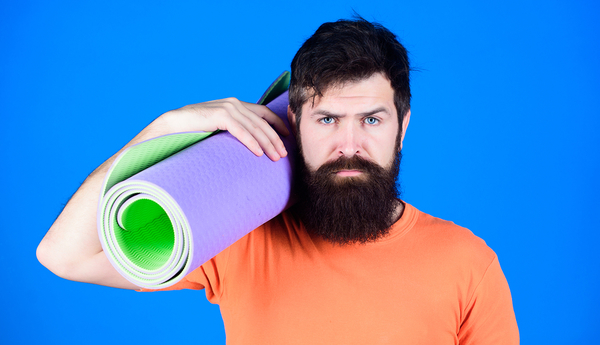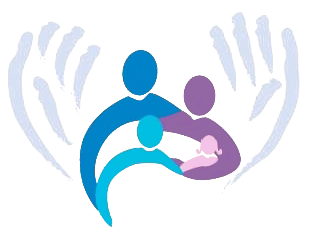Blog
Your End of Q2 Wellness Check-In
Family Chiropractic & Spinal Health Care Center likes to check up on our patients to make sure they’re achieving their annual wellness goals. Since many of us make New Year’s Resolutions at the beginning of the year, the transition from May to June is a perfect time to check up on where you’re at and determine where you need to be in order to achieve your health and wellness goals for 2019.
How Do You Feel?
If you’ve been making healthy choices, chances are they’re going to be paying off in the way you feel. Pay attention to your body. If you’re feeling weaker than you feel you should, incorporate more strength training. Same goes for your cardio. If you’re in pain, schedule a consultation with Family Chiropractic & Spinal Health Care Center.
Where Can You Improve?
There are probably multiple areas, whether that be staying on top of your appointments with your chiropractic care specialist, keeping up on your yoga routine, and incorporating mindfulness exercises, that you can probably improve upon.
Make Adjustments
If you’ve hit a rut, now is the time to switch up your routine to blast yourself into orbit.
If you experience any pain or discomfort during work or play, contactd Family Chiropractic & Spinal Health Care Center today to schedule your consultation.
Incorporating Yoga into Yoga Daily Grind
Yoga is an excellent companion to chiropractic care when it comes to relieving your back, neck, spine, legs, and even your mind from the daily/weekly grind.
But, the truth is, the busier we get, the more taking care of ourselves seems to get put on the backburner. The sad reality is that by neglecting our own wellness, we’re actually being less effective at work and even in our extracurricular activities. Below are a few quick, easy ways you can incorporate yoga into your daily routine.
Work Yoga
If you’re sitting at a desk or even standing for long periods at work, take a time out to stretch. If you know some yoga moves, this is the perfect time to incorporate them, relieving the body of being in uncomfortable positions that put strain on your neck, back, hips, and legs.
Spring for a Yoga Class
If you can pony together the funds, try to take a yoga class if even for a short period of time, this way you can establish your base knowledge and do your yoga practice more effectively on your own.
Yoga as Active Recovery
We may think that we have a free pass on days off to do absolutely nothing, and, although we might feel justified, it’s actually a better idea to be a little bit active on your recovery days, by taking a hike or doing some yoga, for instance. You’ll still be giving your body its much-needed rest while also crossing off one of your boxes, so to speak.
If you have any questions about how you can incorporate yoga and chiropractic care into even the busiest schedule, contact Family Chiropractic & Spinal Health Care Center center today to learn more.
The 3 “Cs” of Quality Chiropractic Care
A quality chiropractic care practice should be excellent in a variety of categories, not simply just excellent at the services and treatments they provide. It is a chiropractor’s duty to provide an atmosphere where their patients can feel looked after and cared for.
Below are the 3 “Cs” of quality chiropractic care and should be used as a benchmark when you’re selecting the best chiropractor for you.
1.) Compassionate Care
Your chiropractor should have an idea what it’s like to live with pain. Many have had injuries they’ve had to rehabilitate from themselves. Basically, you’ll want to select a chiropractic care specialist who is going to treat you like a member of their own family.
2.) Cutting-Edge Treatments
Your chiropractor should be well-versed in the latest treatment methods and should also pay attention to additional health and wellness developments in categories like diet, exercise, recovery, rehabilitation, and more.
3.) Clear Results
Your chiropractic treatments should be showing you improvements in pain relief as well as in your general wellness. If it didn’t work, it would not be the enduring medical treatment and drug-free alternative to medication and surgery that it is today.
If you have any questions about how chiropractic care can benefit your life on a daily basis, contact Family Chiropractic & Spinal Health Care Center today.
How to Achieve More Restful Sleep
Achieving more restful sleep can be easier said than done in today’s “grind” culture. Many of us resort to caffeine to fuel our day, some of us drinking coffee or energy drinks throughout the day, which can interrupt our sleep cycles like nobody’s business.
Below Family Chiropractic & Spinal Health Care Center goes over a few ways you can achieve more restful sleep, which will increase your productivity and your quality of life!
1.) Visit Your Chiropractor
Did you know that chiropractic adjustments can help you achieve a more restful night’s sleep? There are not many things in this world more soothing and relaxing than a visit with your chiropractor in Ridgewood, NJ. Chiropractic can help relax and calm you, reduce your overall anxiety, and improve cognitive function.
2.) Stay Active
A big part of why some of us can’t get a good night of sleep is that we still have excess energy to burn at the end of the day. Want to know the antidote for that? Rigorous exercise! You’ll be surprised and delighted how good you sleep after pushing your body to exertion.
3.) Do Yoga and Meditation
Yoga and meditation (both of which often go hand-in-hand) are both great ways to increase relaxation and help you achieve better sleep.
If you have any additional questions about the ways you can improve your sleep through chiropractic treatments, contact Family Chiropractic Spinal Care Center for your consultation today.
4 Foods and Beverages You Should Cut Out of Your Diet
At Family Chiropractic & Spinal Health Care Center we like to often tell our patients about foods they can eat that will boost their health and overall wellness, which will help their bodies stay in tip-top shape and avoid injury, but we also like to take the time to remind our patients about the foods they should avoid in order to optimize their health and wellness.
Below are a few foods you should cut out of your diet if you’re looking to stay fit and be well.
1.) Candy / Processed Sugar
Try to stay away from sugary foods and candies at all cost. Opt for dark chocoloate when you need something sweet. Eat fruits, which are rich in vitamins, antioxidants, and fiber, in many cases.
2.) Alcohol
Cutting out alcohol will boost your health and your bank account. Think of how much time you’ve wasted at bars and drinking maybe a few too many adult beverages. It’s not often that amazing things come out of drinking alcohol.
3.) Breads / Processed Carbs
If you’re eating a bagel every morning (which doesn’t add much nutritional value to your day), instead opt for a clean protein, some type of vegetable, and maybe opt for a sweet potato if you need carbohydrates.
4.) Sodas
Sugary sodas are bad for your health, bad for your teeth, and don’t add any nutritional value to your diet. Opt for more nutritional option, like natural sodas.
If you have any questions about how your diet can boost your wellness, contact Family Chiropractic & Spinal Health Care Center today.
4 Ways to Engage in Active Recovery
In this day and age many of us engage in super active lifestyles on top of working a 40+ hour week. In such cases it might seem like it’s a good idea to take one full day off and do nothing. However, that one day off you take is actually a perfect opportunity to stay active while giving your body a rest from the abuse you’ve been putting it through all week. Below are a few ways to engage in active recovery, which will help you be more productive and experience new levels of wellness. 1.) Do Yoga Yoga is a great way to engage your body while also stretching out your muscles and giving your joints some much-needed TLC. 2.) Go on a Hike If you run, maybe taking a day off can mean going up to the mountains and going on a 5-mile hike. You’ll still feel the burn without pushing yourself to exertion. It will still count as a day off! 3.) Paddleboarding Paddleboarding is actually a fantastic way to engage your core while at the same time enjoying nature. Runners, athletes, and martial artists can all count a day of paddleboarding as a day off. 4.) See Your Local Chiropractor Seeing your local chirorpactic care specialist is a great way to engage in active recovery on your day off. If you have any questions about how you can boost your wellness the drug-free, all natural way, contact Family Chiropractic & Spinal Health Care Center today.
Exploring Headache Causes: Is Your Lifestyle to Blame?
Sitting for a living makes your headache-prone
There are countless physiological reasons you may be experiencing headache and each can be compounded by abstract factors and the lifestyles we lead. Many people work jobs that require long deskbound periods combined with extreme mental exertion, or physically demanding jobs, taxing the body to its breaking point. Stress is accumulating all the time, and if you are not giving your brain and body proper nutrition, sleep, and exercise, the cards will stack against you, commonly resulting in a headache. They are fickle and personalized: each person’s headache is a manifestation of your lifestyle.
The Science of Sciatica: How to Beat the Pain
Sciatica is a common impingement syndrome, with various causes and degrees of pain.
Essentially, the sciatic nerve, which happens to be the largest nerve in the human body, becomes pinched. The symptoms associated with sciatica can range from cramp-like irritation and numbing in the buttocks and legs, to sharp and shooting pain throughout the leg and lower extremities.
Walking is the Ultimate Preventive Medicine
What is the power contained within a simple walk?
The power is profound: walking for just half an hour per day can be a godsend to joints that are silently crying out for movement. It frees your body and your mind, fighting back against both physical pain and mental anxiety. It allows you to re-focus your thoughts and gain perspective that cannot be gained through sitting around doing nothing! Let’s take a look at the power of walking from a chiropractor’s perspective.
Relax Already! Chiropractic Helps You Calm Down
The stress is in your spine
Every day, you put your spine through countless motions and stresses that cause general wear and tear on the vertebrae and surrounding muscles. Physical and mental stress combine to cause slight misalignments of the spine, called subluxation, and put pressure on the associated nerves. This can cause you to feel out of sorts and limit your range of motion.



